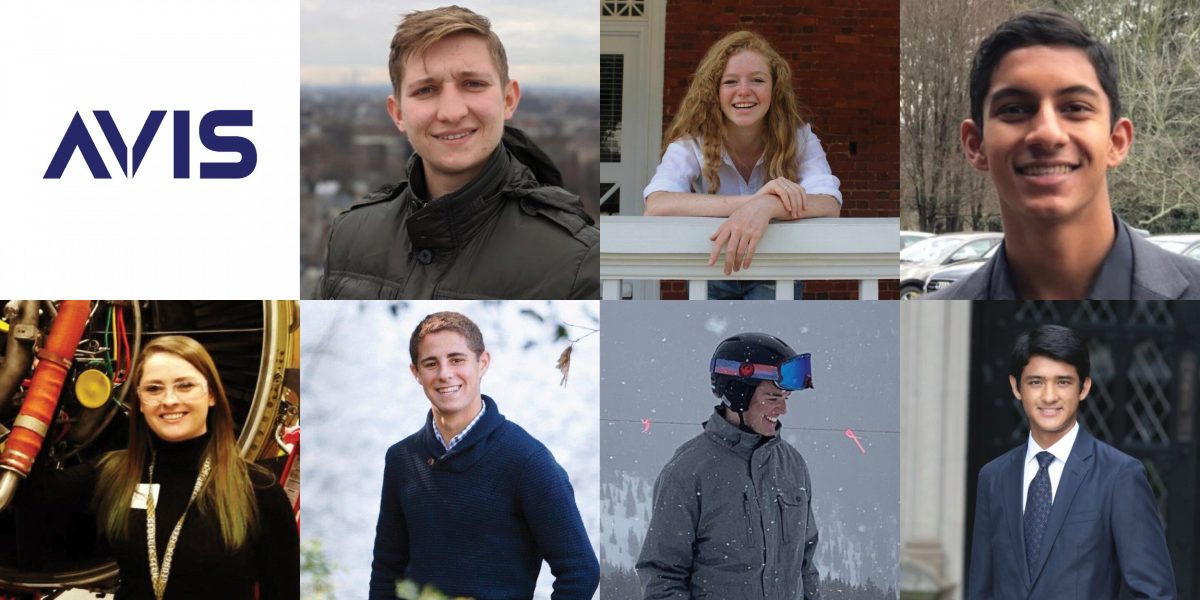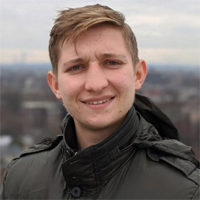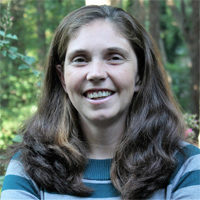
Working Together, Apart: Members of Team AVIS, which has recently been sponsored by the Georgia Space Grant Consortium. (top, from left) Michael Gamarnik (AE), Samantha Hartz (ID), Noah Mammen (Business); (bottom) Bethe Newgent (MSE), Ethan Rosman (ME), Tommy Schrager (AE), and Shiva Khanna Yamamoto (AE).
 |
| Michael Gamarnik AVIS Team Lead |
 |
|
Prof. Kelly Griendling |
A team of Georgia Tech undergraduates - led by School of Aerospace Engineering student Michael Gamarnik – is in line to receive as much as $80K to fund their research through the 2020 NASA University Student Research Challenge (USRC).
The team - Active Vortex Inducing System (AVIS) - was tasked with developing a new aeronautic concept to change the industry in a way that is both relevant to NASA's mission and commercially viable. Teams competed to receive an initial $40K to launch their idea, with another $40K available to prototype and continue their research if they meet certain conditions in the coming months. Up to five teams were eligible to make it through the first round; the Georgia Tech team is the only team selected thus far.
Drawing its members from Georgia Tech's colleges of Engineering, Business, and Design, Team AVIS proposed developing an active vortex generating system to optimize the airflow above an aircraft wing to reduce drag, improve safety, and reduce CO2 emissions.
You Can Help Team AVISNASA evaluators liked Team AVIS's design, but the project needs your support to get to the finish line. Between now and August 31, the team must raise $2,000 from the public -- as proof their concept is marketable. Once they reach that goal, they will qualify for the second installment ($40K) of NASA USRC funding. Find out how you can contribute by visiting: http://avis.ae.gatech.edu/ The additional USRC funds will go toward supplies and materials to 3-D print, test, and revise their design. The experience of raising $2,000 from the public is all about the students honing their presentation skills, says Georgia Space Grant Consortium director and Aerospace Engineering professor Stephen Ruffin: “By requiring crowdfunding, NASA USRC supports the ability to garner buy-in from others, which is so crucial for impactful technology products," he said. "That's a skill they will need throughout their careers." |
As the team leader, Gamarnik serves as the grant’s principal investigator (PI), a role normally reserved for faculty researchers.
Team AVIS received word that it was selected to move forward on their project March 13, the same day that Tech tamped down campus operations due to COVID 19.
Team advisor, Kelly Griendling, remembers her initial reaction to these two events:
“I happened to check my email after teaching class that day and I saw this email thread from the students about their research grant being approved and I thought ‘wait a minute what happened, what did I miss?’ It made a bad day a whole lot better."
Scattered geographically, Team AVIS members didn't miss a beat. For the next three months, they met remotely and worked independently -- reading literary reviews and technical papers to improve their proposal.
“They have done a good job of getting a team that is very diverse from across campus, and really recognizing each other’s areas of expertise and bringing that all together,” said Griendling.
Under the terms of the 2020 challenge, all teams submitted a budget for approximately $80K - an amount that covered any needed equipment, travel, materials and supplies. Accepted proposals then received the first installment of the $40,000 to launch their research. To receive the second $40,000 installment, teams are now required to crowdfund at least $2000 as an indication of their proposal’s commercial viability. (see sidebar)
“We are a fairly young team. So the project is growing as we’re learning different concepts that we need to develop the project,” said Gamarnik.
Those concepts span a wide range of knowledge bases - from technical research and design to prototyping and entrepreneurship. This fall, AVIS plans on using the AE School’s John J. Harper Wind Tunnel and the Yang Aero Maker Space to prototype and test different 3D-printed models of its design.
Because their design will go through a huge variation in temperatures and conditions on the tarmac - like, rain, electrical storms, and summertime heat - team members are researching different materials that could withstand these conditions.
“We need materials that aren’t going to crack quickly or corrode, so that’s a large part of my contribution to the team – researching these conditions and how the materials hold up to them,” said MSE student Bethe Newgent.
[VIDEO::https://www.youtube.com/watch?time_continue=1&v=wJSpqER9MWE&feature=emb_logo]